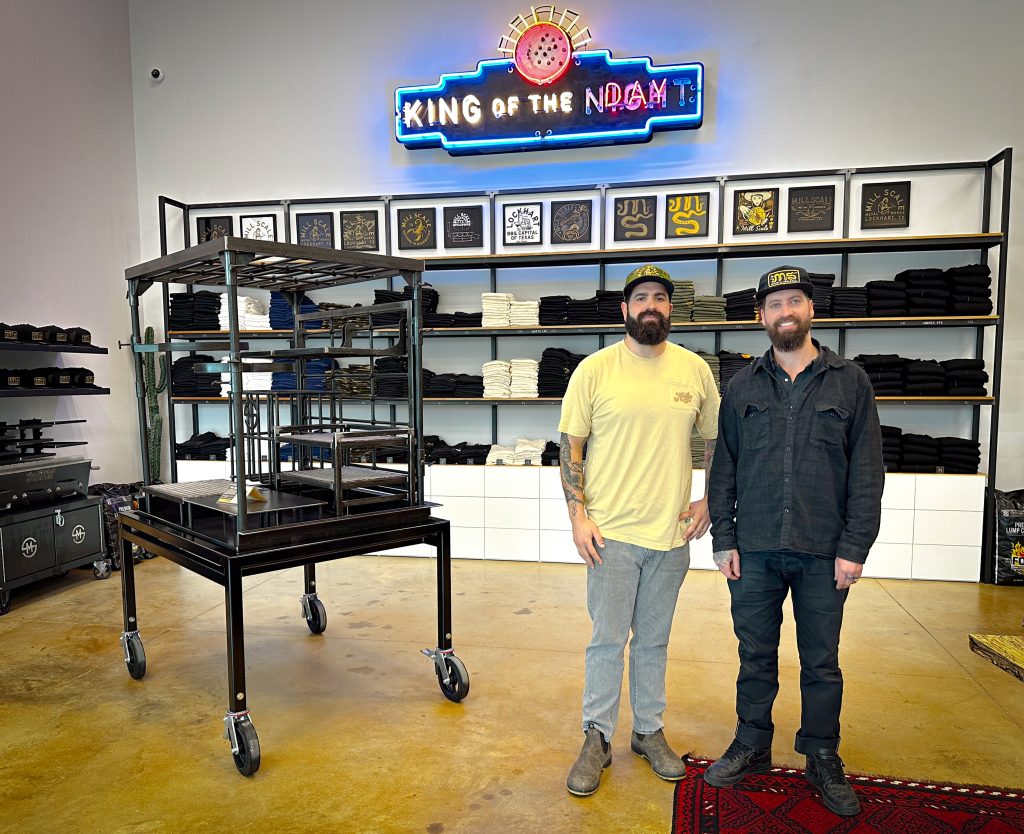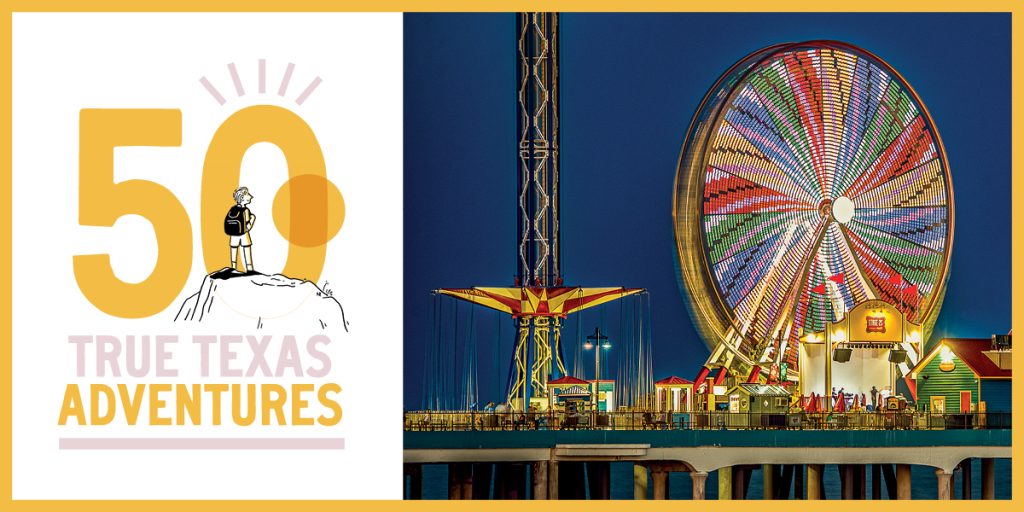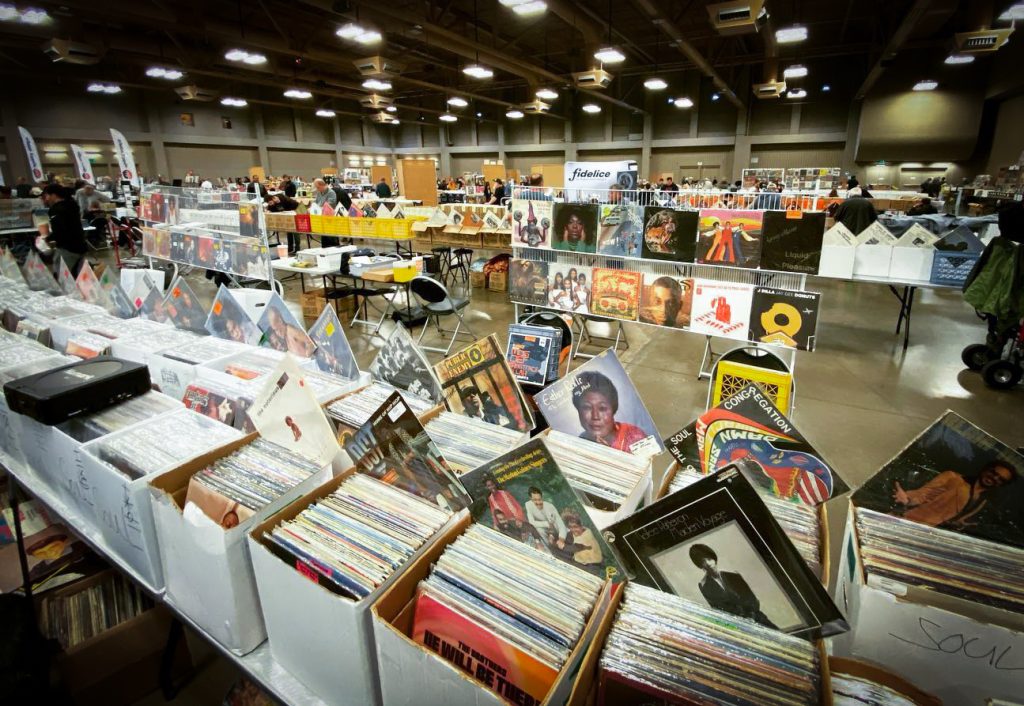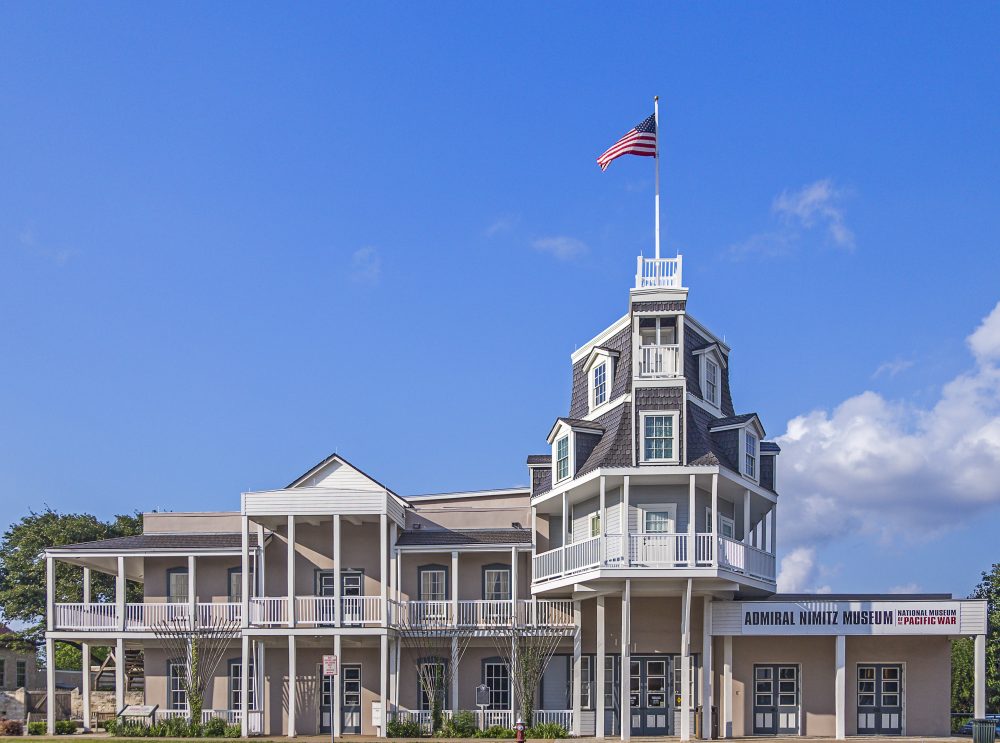
The National Museum of the Pacific War in Fredericksburg will open the renovated Admiral Nimitz Gallery this weekend.
The Nimitz Hotel building has occupied a prominent corner on Fredericksburg’s Main Street since its construction in 1852, first as a waystation for frontier travelers and then as a museum honoring a hometown hero of World War II.
The historic three-story building opens a new chapter in its 170-year history this Sunday with the grand re-opening of the renovated Admiral Nimitz Gallery. It’s the latest development of the National Museum of the Pacific War, which welcomes about 150,000 visitors a year.
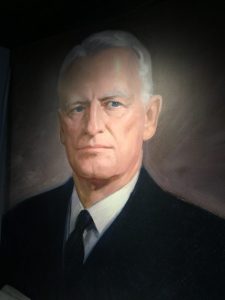
A portrait of Admiral Nimitz in the new gallery.
Following a two-year, $4.5 million renovation, the new Admiral Nimitz Gallery dives deep into the life and career of Chester William Nimitz, the commander of Allied forces in the Pacific during World War II. Nimitz was born across the street from the gallery and raised in Fredericksburg and Kerrville.
Museum Director Rorie Cartier said the Nimitz Gallery was due for a renovation and expansion to improve the conditions for artifacts and update the exhibits with the new technologies. While the museum’s main building focuses on the larger story of the Pacific Theater, the Nimitz Gallery spotlights Admiral Nimitz and his ties to Fredericksburg.
“The building is a staple in the community, well known and respected,” Cartier said. “The grand reopening is an opportunity for people to come see. It’s really different from what anything was in here in the past.”
Sunday’s special events include free admission to the gallery, a birthday cake commemorating Nimitz’s 135th birthday, and a showing of the documentary film From Texas to Tokyo Bay.
Nimitz’s grandfather, German immigrant Charles H. Nimitz, built the Nimitz Hotel, which at one time was the only establishment offering clean rooms and hot baths between San Antonio and El Paso. Over the years, the hotel building also housed services such as a barber shop and a bus station. A group that would later become the Admiral Nimitz Foundation acquired the building and opened it as the first building of the National Museum of the Pacific War in 1971.
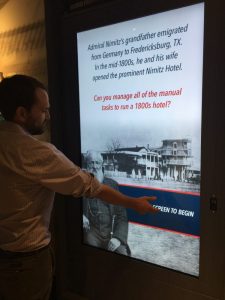
The renovated gallery contains multiple interactive, touchscreen activities.
The new exhibits chronicle Fredericksburg’s early days as a Hill Country outpost of German immigrants. In one display, visitors can explore 1840s transportation alternatives between the port at Indianola and Fredericksburg. In another, a touchscreen gives visitors the opportunity to try their hand at running an 1850s inn.
The bulk of the gallery, however, traces the life and career of Nimitz with artifacts ranging from his cradle, to his rowing cap from the Naval Academy, to an invitation to an 1844 “Texas Round-Up” party he threw at Pearl Harbor.
The gallery’s interactive exhibits also give visitors a chance to test their decision-making skills in wartime scenarios, such as making fleet and battleship navigation decisions in the face of Japanese warships and dwindling fuel supplies.
Reagan Grau, the museum’s director of collections and exhibits, says the museum drew on new material donated in recent years by Nimitz family descendants, including family photos and correspondence that provide insight into Nimitz’s character. The new gallery has double the number of artifacts compared to its predecessor.
“My hope is visitors come away with an appreciation for Admiral Nimitz and what he accomplished from humble origins, just by effort and dedication,” Grau said. “I’m hoping they’ll get a sense of his leadership ability, his leadership style, and his legacy.”
